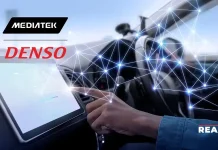Endpoint Protection Platforms (EPP) are vital for securing your organization’s workstations, mobile devices, servers, and containers. Contemporary endpoint security solutions integrate advanced preventive measures like Next-Generation Antivirus, capable of blocking both known and unknown malware, alongside active defensive measures known as Endpoint Detection and Response (EDR).
This blog offers an introduction to endpoint protection, assisting you in comprehending the criteria for selecting and evaluating EPPs. Let’s get started.
What is an Endpoint Protection Platform?
Endpoint protection encompasses the strategies employed to safeguard endpoint devices such as desktops, laptops, smartphones, and tablets from cybersecurity threats. Organizations deploy endpoint protection systems to secure devices utilized by employees, on-site servers, and resources in cloud computing.
Every device connecting to an enterprise network introduces a potential security risk due to endpoint vulnerabilities that malicious actors may exploit to breach the network. Hackers commonly target endpoints as a convenient entry point to infiltrate target systems, install malware, pilfering sensitive information, or gain control over the network.
Irrespective of the device model adopted by an organization (e.g., BYOD, remote access), security administrators must ensure the presence of appropriate tools to detect and thwart security threats, along with prompt response mechanisms in case a threat progresses to a breach.
Some endpoint protection platforms include:
- Microsoft Defender for Endpoint: It is a cloud-powered security solution by Microsoft, offering vulnerability management, endpoint protection, EDR, and mobile threat defense.
- CrowdStrike Falcon Endpoint Protection Platform: It is a cloud-native platform with prevention, detection, and response capabilities, featuring threat hunting and intelligence integration.
- Fortinet Endpoint Visibility & Control: This endpoint protection platform is focused on securing managed endpoints, preventing both known and unknown malicious attacks.
- Sophos: Integrated suite with antivirus, data encryption, intrusion prevention, and data loss prevention for comprehensive endpoint security.
Also Read: 6 Must-Have Features of Medical Device Software in 2023
Decoding Traditional vs. Cloud-Native Platforms
In the past, organizations relied on endpoint security solutions following an on-premise hub-and-spoke model, with the data center at its core. Endpoints were safeguarded through agents managed centrally, creating security silos that left endpoints beyond the network perimeter unmanageable.
However, this approach has become obsolete due to the surge in remote work and the globalization of workforces. Many enterprises, in response to these trends, have either adapted their legacy solutions into a hybrid model or embraced fully cloud-native solutions.
Cloud-native endpoint security tools operate through a central console in the cloud, connecting to devices via agents directly on the endpoints. These agents function independently, even when the endpoint is offline. By leveraging cloud controls and policies, organizations can enhance security performance, extend administrative capabilities, and eliminate the limitations imposed by security silos.
How to Choose the Right EndPoint Protection Platform?

Selecting an endpoint protection platform involves considering five crucial elements, delivered through a cloud-native architecture, to ensure a balance between security and simplicity. The following objectives serve as guidelines during the evaluation and decision-making process:
- Prevention: Prioritize solutions that effectively prevent the entry of malicious elements, minimizing potential threats.
- Detection: Look for platforms with robust detection capabilities to identify and eliminate attackers promptly.
- Zero Trust Assessments: Ensure the platform incorporates Zero Trust principles, providing the least privileged access to enhance overall security.
- Threat Hunting: Opt for solutions that go beyond automation, employing threat-hunting techniques to elevate detection capabilities.
- Threat Intelligence Integration: Choose platforms that seamlessly integrate threat intelligence, allowing organizations to stay informed and proactive against evolving threats.
- Vulnerability Management and IT Hygiene: Select platforms that include features for managing vulnerabilities and maintaining IT hygiene, fortifying the environment against potential threats and attacks.
By adhering to these guidelines, organizations can make informed decisions when choosing an Endpoint Protection Platform that aligns with their security and operational requirements.
What are the Different Components of EPP?

Endpoint Protection Solutions, often packaged as EPP, encompass several key components to provide comprehensive security. These primary components include:
Next-Generation Antivirus (NGAV)
- Enhances traditional antivirus with behavioral analysis to detect new and unknown threats.
- Guards against zero-day malware, file-less malware, ransomware, and sophisticated threats.
Advanced Detection Technology
- Encompasses file integrity monitoring (FIM) to identify suspicious file changes.
- Utilizes behavioral analysis, vulnerability assessments, and deception technology, and integrates with threat intelligence.
Endpoint Detection and Response (EDR)
- Monitors and logs activity on endpoints to detect suspicious behavior and security risks.
- Provides real-time visibility for security analysts to investigate, identify the root cause, and eliminate threats.
eXtended Detection and Response (XDR)
- An evolution of EDR, XDR extends threat detection and response capabilities across various environments, including endpoints, networks, email systems, and cloud environments.
Managed Detection and Response (MDR)
- Addresses the shortage of expert security staff by offering MDR services.
- Provides access to the vendor’s Security Operations Center (SOC) where outsourced experts perform threat hunting and incident response on behalf of the organization.
These components work together to create a robust and proactive defense against a wide range of cyber threats, ensuring organizations have the tools and expertise needed to detect, respond to, and mitigate security incidents effectively.
In a Nutshell
The widespread adoption of endpoint protection platform (EPPs) has proven their effectiveness in safeguarding organizations from the ever-evolving landscape of cybersecurity threats. By staying abreast of the latest EPP advancements and continuously adapting your security strategies, you can maintain resilience against cyberattacks, protecting your valuable data and ensuring the smooth operations of your organization.




